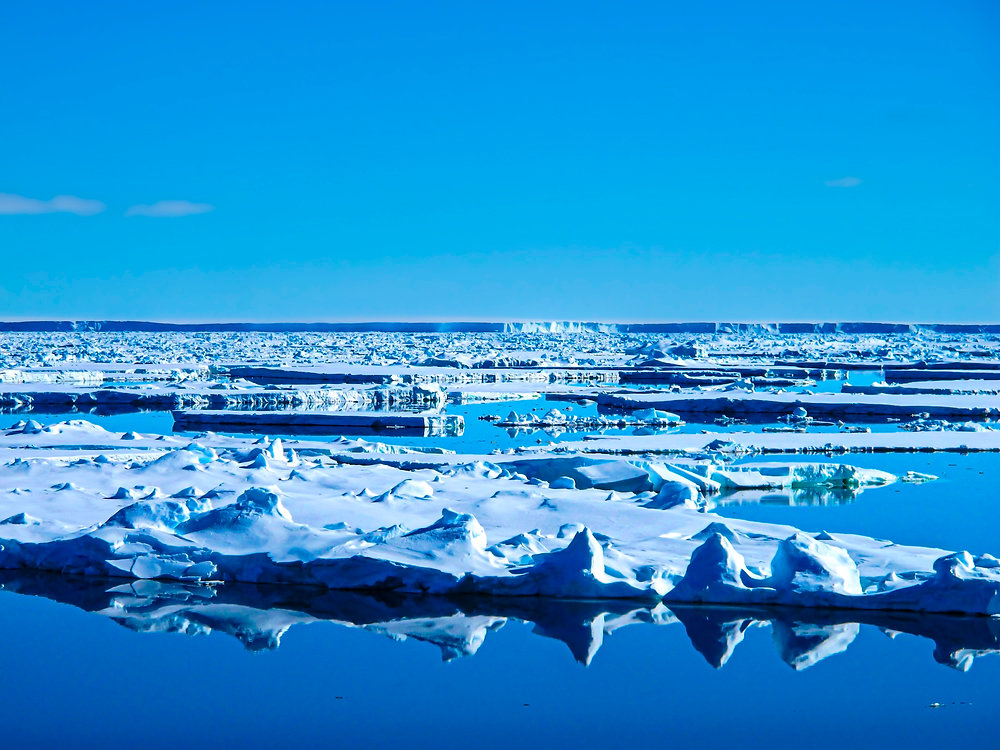

Sea Ice Continues to Decline

Crunch. Another chunk of sea ice crumbles under the weight of the icebreaker. The engines roar as the ship reverses, preparing to ram the seemingly impenetrable expanse of ice covering the sea from horizon to horizon. It takes days to break through the metres of ice floating on the sea surface. Days to move mere kilometres in our behemoth of a vessel. And yet on other days, we skim through the drifting pack ice, the free floating pieces scattered in the still water, as if we were brushing away pebbles.
The beauty of the ice, of its infinitely changing faces and landscapes, captures our imagination. Having travelled to both the Antarctic and Arctic sea-ice regions, it saddens us that the ice is shrinking, fading under our changing climate at an alarming fast pace.

The Arctic is warming at more than twice the global average and Arctic sea ice has declined ~12% per decade since the late 1970s, reaching record lows in recent years. This alarming decline represents a fundamental shift in the Arctic environment. As ice melts, darker ocean waters are exposed, absorbing more of the sun’s energy and accelerating warming.
The Arctic warming is not just an issue for high latitudes. Research shows links in Arctic warming to disruptions in weather patterns across the Northern Hemisphere, including prolonged periods of heatwaves, cold snaps, and storms. This connection between polar and mid-latitude weather patterns underscores the global nature of the problem.

While the Arctic has seen a clear downward trend in sea ice, the situation in Antarctica has been more complex with regional and seasonal variations. And yet recent research suggests significant reductions in sea ice cover since 2014, reaching a record low in Feb 2023 (Purich & Doddridge, 2023). Further, model projections suggest a decrease in Antarctic sea ice over the next 50-100 years. This has the potential for significant impacts on the global climate, sea-level rise and ecosystem stability.
Addressing the decline in sea ice requires a multi-faceted approach. Reducing greenhouse gas emissions is the most critical step, as it is the primary driver of global warming and polar ice melt. International agreements like the Paris Accord aim to limit global temperature rise, but more ambitious efforts are needed to stabilise the polar regions.

Scientific research also continues to play a crucial role in understanding and responding to climate changes. Ongoing monitoring of sea ice, through satellite observations and field studies, helps track the extent and thickness of ice cover. Advanced climate models are also improving our ability to predict future changes in sea ice and their global impacts.
The decline of sea ice in the Arctic and Antarctic is one of the clearest indicators of a warming planet. By reducing emissions, protecting vulnerable species, and supporting scientific research, we can work towards a future where these vital regions are preserved for generations to come.
References and Further Reading
NASA: Vital Signs of the Planet: Arctic Sea Ice. Accessed Sept 20, 2024.
Purich, A., Doddridge, E.W. Record low Antarctic sea ice coverage indicates a new sea ice state. Commun Earth Environ 4, 314 (2023). https://doi.org/10.1038/s43247-023-00961-9





